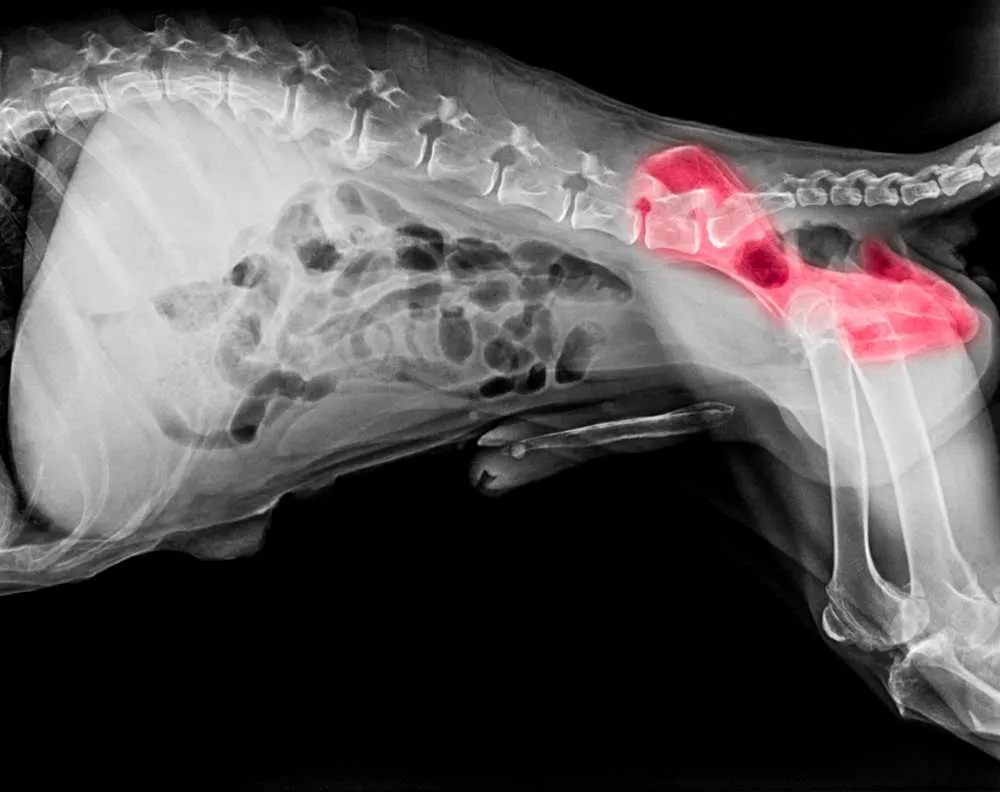The brain and heart are, undoubtedly, the most important parts of the dogs’ bodies. Without them, they wouldn’t be able to function whenever they need to do something. Most dogs don’t realize this at first, but without legs, they can’t move anywhere!
The same goes for corgis; if their legs aren’t functional, they won’t be able to adequately play with you and with other dogs in the dog park. Reading all of this might make you wonder, “Do corgis have leg problems?”. Should you be worried about your corgi if it doesn’t want to walk or run?
All dogs, especially corgis, can have some problems with their legs at some point in their lives.
Are there any specific reasons why leg problems occur in corgis? Can you help them out when they are experiencing pain in their legs? Do genetics affect in any form corgis when talking about leg problems?
Even if you take care of your corgi without making a single mistake, there is a slight chance that they might get some leg problems on the way. Learn how to help them out, in those situations, by scrolling down below!

Why Do Corgis Need To Have Functional Legs?
Throughout history and evolution, every living being who could move somehow needed to do so. If a living being remains static, it won’t progress in any shape or form. So whether it’s to exercise or to hunt food – moving your body is always a critical necessity for your health.
Dogs aren’t exempt from this rule, as they also need legs to move around freely. As you walk to your local dog park, you will undoubtedly see many dogs utilizing their legs to walk or run in a straight line.
As you observe all of those dogs playing with each other – if you are from England, the chances are that there will be several corgis among those dogs. As a representative of their country, corgis are a fan-favorite dog breed loved all around the United Kingdom!
Although corgis are relatively small dogs, compared to most other dog breeds, that doesn’t stop them from moving at high speed. If they are focused on something or someone, they can accelerate quickly and rush towards their target.
Corgis can thank the overall constitution of their bodies, as having a long spinal cord with short legs – they can move as fast as a race car! In the past, people used their predispositions and their instincts to protect and herd their livestock.
Even today, some people that live in the countryside still use corgis as herding dogs. But, the time has changed, and corgis are mainly used today as house dogs that keep us company with lots of love and hugs. I’m guilty of having a couple of corgis back home as well!
But what happens when your corgi isn’t able to move freely? Are corgis prone to having some leg problems that can affect their ability to walk and run properly? For example, you might have seen that some corgis in your neighborhood have difficulty walking with their owners.
There are many reasons as to why they could have leg problems – I’ve listed below some of the most common reasons for that occurrence:

Hip Dysplasia
Most of the leg issues dogs can have are occurring mainly from having bad genetic predispositions. For example, every puppy born from parents diagnosed with a possibility of manifesting hip dysplasia can someday be affected by that disease.
Luckily for all of you with corgis, hip dysplasia is more common in dogs that are medium-sized or larger. The smaller the dog, the lesser the chance of them dealing with this disease, meaning that corgis can still be affected by hip dysplasia.
When corgis are moving their back legs, they are primarily using their hip joints. Let me straightforwardly explain this; the hip joints are constructed with a ball located in a socket. To move their legs, corgis rotate and move their ball around the socket in the hip joint.
If a corgi has entered the first stage of developing hip dysplasia, the ball won’t move properly, as it will rub and scratch the socket unintentionally. In addition, by constantly applying pressure to the socket, corgis’ hip joints will slowly deteriorate.
That deterioration is influenced by how much corgis are moving daily. On top of that, if your corgi tends to stay on its feet all day long and run as fast as possible, the progression of the deterioration of its hip joints will gradually speed up.
In most cases, they will have leg problems that won’t allow them to move correctly. As time passes, the pain will be greater until it becomes unbearable for your corgi. If that happens, the chances are that it has fully acquired hip dysplasia.
If that happens, you will need to take it to your local veterinarian, and they will determine exactly how bad it is. By running an x-ray scan of their back legs, the veterinarian will have a clear picture of the current stage of the development of hip dysplasia.
Corgis that have entered the final stage of hip dysplasia will need to undergo a complete hip replacement treatment. I know that hearing this from your veterinarian might be stressful, but hear me out; as long as there is a way for your corgi to be saved, NEVER hesitate and take action!
The surgical removal of the corgis’ hip might be costly, but I assure you that it will be worth every penny, as the success rate is nearly 100%. After a successful treatment, your corgi will soon enough be able to walk and run on its own – not as much as before but still enough!

Degenerative Myelopathy
Like hip dysplasia, degenerative myelopathy is a genetic disease directly passed onto the next generation of dogs if the previous one had it. Unfortunately, this time, corgis will have a higher chance of manifesting degenerative myelopathy, contrary to hip dysplasia.
This disease attacks the brain stem, spinal cord, and nervous system of the corgi. Unfortunately, as of this moment, there is no cure for degenerative myelopathy – you will just need to accept that if your corgi has begun to suffer from this disease, there is no going back.
Corgis need to have great posture and muscles to sustain themselves properly whenever they walk and run somewhere. As a disease, when it starts to manifest in your corgi, it will quite fastly spread all around its body, effectively targeting even the legs of your corgi.
In most cases, degenerative myelopathy will mainly target the muscles on the back of your corgis, as well as their back legs. Without the proper function of their back legs, corgis won’t be able to effectively move around the place as much as they would want to do.
Luckily, one device can help out your corgi if it completely loses the ability to use its back legs. You’ve probably guessed it right; that device is a dog wheelchair. Consult with your trusted veterinarian on which wheelchair will adequately fit your corgi.
When your new dog wheelchair arrives, you will need to introduce it properly to your beloved corgi; let me instruct you on how to do that:
- As soon as your wheelchair arrives, make sure that you have gotten the right size for your corgi. It happens, although rarely, that the measurement that you have requested will be incorrect for your corgi – tell the courier to stay until you make sure that it’s the right size.
- After determining that the size is correct, take it in, put it down on the ground, and bring your corgi close to you. All corgis are curious creatures that love when something new is happening to them. So it will probably sniff the wheelchair for several seconds.
- When the corgi has calmed down, instruct it to sit. Then, use the manual that is in the box and start to assemble the wheelchair by hand. It’s recommended that your corgi stays by your side to watch what you are doing, as it needs to learn that that device is safe.
- The assembly will last a couple of minutes. After you’ve done, tell your corgi to stand up and wait patiently. Then, take the wheelchair and move it slowly towards the back of your corgi. Use some treats to calm your corgi down if it starts to panic.
- Gently start to mount the wheelchair on the back of your corgi; the manual will have instructions on how to do that as well. When you are done, give another treat to your corgi and slowly stand up and start to move away from it.
- Tell your corgi to follow you. At first, it will be confused and won’t understand what is happening to it, but after some time, it will realize that the device is helping it move a little bit easier.
Leg problems for corgis will be a challenging experience for both them and you, but with a bit of luck and knowledge, you will be able to help them out! There’s nothing better than seeing your corgi walk and run once more; thinking about that puts a smile on my face!

Do Corgis Have Leg Problems? – Recap
It doesn’t matter where you are currently located; if you are experiencing some kind of pain, you should head straight to your local doctor. The same can be said for your corgis; if you ever feel like they are suffering from something, trust your guts and take them for a checkup.
Some people are skeptical when thinking about the constitution of the corgis’ body, making them wonder do corgis have leg problems. Is there any reason to worry, as having a long body with short legs might seem like an unhealthy composition to have?
Unfortunately, every dog, including corgis, can suffer from leg problems.
You need to learn how to support them adequately when they are in pain. Head straight to your local veterinarian and ask him to run a scan. On the off chance that your corgi has some leg problems, act quickly and treat them as soon as possible. Better safe than sorry!
Read Also: Why Do Corgis Lay With Their Legs Out?

